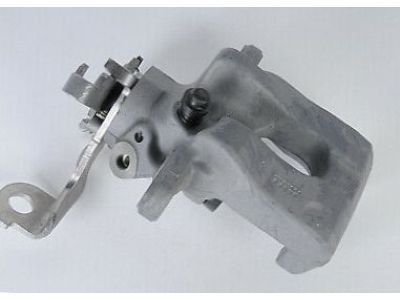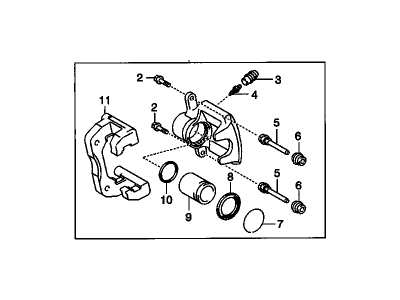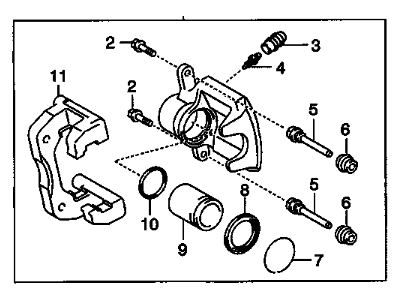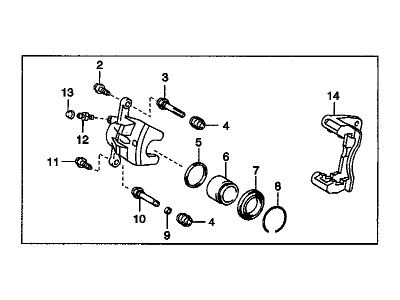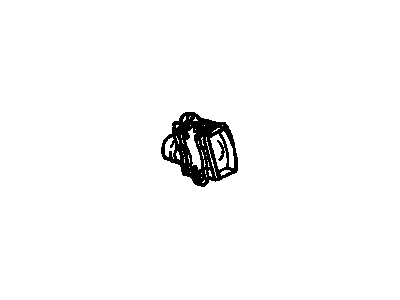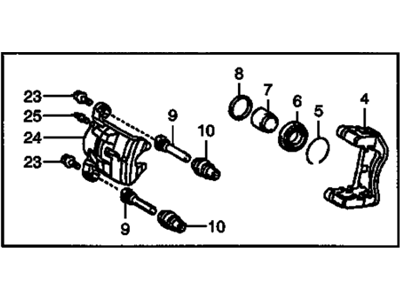
My Garage
My Account
Cart
Genuine Pontiac Vibe Brake Calipers
Caliper- Select Vehicle by Model
- Select Vehicle by VIN
Select Vehicle by Model
orMake
Model
Year
Select Vehicle by VIN
For the most accurate results, select vehicle by your VIN (Vehicle Identification Number).
14 Brake Calipers found
Pontiac Vibe Caliper,Rear Brake (W/O Brake Pads & Bracket)
Part Number: 19204183$115.74 MSRP: $218.39You Save: $102.65 (47%)Ships in 1-3 Business DaysPontiac Vibe Caliper,Rear Brake
Part Number: 19204610$17.24 MSRP: $31.34You Save: $14.10 (45%)Ships in 1-2 Business DaysPontiac Vibe Caliper,Rear Brake (W/O Brake Pads & Bracket)
Part Number: 19204182$109.92 MSRP: $199.84You Save: $89.92 (45%)Ships in 1-2 Business DaysPontiac Vibe Caliper,Front Brake
Part Number: 19204318$108.06 MSRP: $203.87You Save: $95.81 (47%)Ships in 1-2 Business Days
Pontiac Vibe Brake Calipers
Brake Caliperss in car models Pontiac Vibe play the following functions: It transforms hydraulic pressure from the master cylinder into mechanical force. This force pushes the brake pads all the way to the rotors to slow down or to stop the vehicle if in motion. PT is consistent with fixed and floating brake calipers for its Pontiac Vibe models. In the fixed type, there are several pistons on both the sides of the rotor applying the pressure in a consistent manner while in the case of the floating type, the pistons are only found on one side and they slide when applying pressure and there are problems such as uneven pad wear which can occur to the floating type due to this mechanism. These calipers are usually built from cast iron bodies which have steel or phenolic pistons. Several options on the performance are available, which are amendments to the factory fitted calipers including higher levels of braking force and looks. This is more so because the caliper has hidden ability of causing issues which affect the whole brake system, issues like leakage and unequal wearing.
Each OEM Pontiac Vibe Brake Calipers we offer is competitively priced and comes with the assurance of the manufacturer's warranty for the part. Furthermore, we guarantee the speedy delivery of your orders right to your doorstep. Our hassle-free return policy is also in place for your peace of mind.
Pontiac Vibe Brake Calipers Parts Questions & Experts Answers
- Q: How to remove and install brake calipers on Pontiac Vibe?A:Begin by loosening the wheel lug nuts, raising the vehicle, and securely supporting it on jackstands. Remove the wheels. Therefore remove the brake hose banjo bolt and disconnect the hose from the caliper. Thereby Plug this hose to keep contaminants out of the brake system as well as avoid losing more brake fluid than is necessary. After that, remove the caliper mounting bolts. Remove the caliper. Reverse this process as you install the caliper. Also, fix new sealing washers at both sides of the brake hose banjo fitting; they should be found in your rebuild kit. Next time you do this, tighten these caliper mounting bolts in line with torque specifications. If there was any disconnection on hose, bleed it after replacing or removing enough fluid from master cylinder reservoirs. Afterwards install wheels and lug nuts back on it again if needed before lowering down automobile unto ground hence tightening them appropriately as stipulated inside user manual while ensuring equal torquing force across all wheels (including spare tire). While others may require one to remove brake hose banjo bolt and subsequently detach hose from this caliper in order to reach rear disc brake caliper prior to completing other steps required during replacement procces. The next step is to unfasten lug nuts on rear tires so that they can be raised above ground level by use of jacks stands-after which these tires will be removed from their current position. The other action will involve removing a tube with bolt placed at its center coming out braking system that is linked to calipers thereby preventing contamination during maintenance procedures through clogging up internal mechanism by dust particles or rust happening inside metal pipe joints; thus preventing unnecessary loss of additional amounts liquid used especially when dealing with older models' designs having already deteriorated hydraulic lines due time factors like tear within rubber parts among others which require extensive repair work done instead simply replacing affected component such an item might have destroyed almost all Brake Pads. This is done by loosening the wheel lug nuts first; after that, raise your vehicle and have it supported securely on jackstands. Next, remove the wheels. Take away the brake hose banjo bolt and separate the hose from caliper. Plug this hose to keep contaminants out of the brake system also so as not to lose any more brake fluid than necessary. Remove then caliper mounting bolts. Remove the caliper. Install caliper by reversing removal procedure. Remember to put new sealing washers in both sides of brake hose banjo fitting (they should be included with the rebuild kit). Finally, caliper mounting bolts should be tightened to torque specifications if you want it last longer enough during which case those having been detached must be bled before removing excess liquid from container located under battery cover because their replacements can't be made within such cases hence new ones need fitted while keeping track using similarly designed tools available in market since they're used internationally all over globe so majority garages prefer applying universal standards everywhere including Uganda where there are a lot more different car models being sold than any other place around continent due availability cheap Asian imports. If one wishes to remove rear disc brake caliper, they should unfasten the hose from it by disconnecting its banjo bolt. Then plug this hose so that there are no impurities within braking system or unnecessary loss of additional amounts liquid employed especially as most older makes tend have worn hydraulic lines which may take many days for repairing whole system instead just replacing broken sections such item might have damaged almost all pad assemblies but now has taken even longer time when dealing their corrosion problems rather than simply changing out affected unit like this they would own done already broke almost every ground contact surface. In order to complete this particular job you are supposed to loosen lug nuts on rear tires till they are above ground level by use of jacks stands whence these will be removed altogether eventually .Thereafter, the next thing would involve removing a line with a center bolt sticking out of it that goes to brake cylinder and calipers thereby preventing dirt from entering into them when performing maintenance through blocking internal mechanism due to dust particles or rust which occurs within metal tube fittings; hence avertable loss of more fluid used especially in case of old models which have damaged pipes because they need extensive work instead just replacing worn-out part like this may have been ruined almost every lining.
